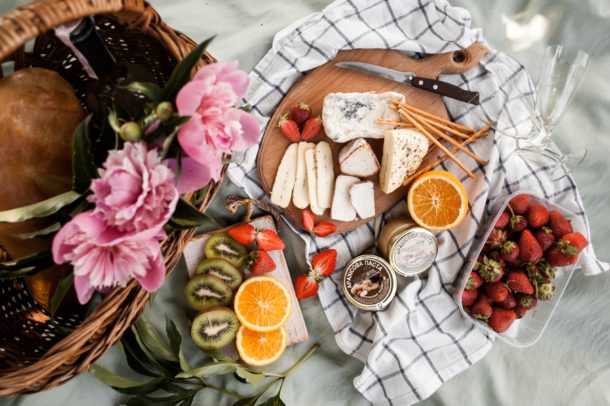Warm weather and longer days have us looking forward to summer BBQs, picnics, and long days at the beach. However, we aren’t the only ones who enjoy the sunshine- harmful bacteria in food multiply quickly in hot, humid conditions. Infants, young children, seniors, pregnant women, and people with weakened immune systems are at highest risk of food poisoning. Keep the following food safety tips in mind to prevent a bug from spoiling your picnic.
Before you go:
-
• Wash produce before leaving for the day
• Use insulated coolers with bags of ice or cold packs, and keep cold items together. Car trunks heat up quickly, so store coolers in the backseat if possible.
• Keep raw meat or poultry separated from ready to eat items (e.g., fruit and vegetables, salads, and cooked foods). Store them in a separate cooler or on the bottom in leak-proof bags or containers.
• For perishable items, take only the amount you will use (i.e., a small jar of mayonnaise). Take a supply of shelf stable snacks to keep you energized (e.g., dried fruits and nuts, cereals, nut butters, and pre washed fruits).
• Take an extra set of plates and serving utensils to prevent cross contamination when cooking.
• If you will not have a reliable source of soap and clean water, bring antibacterial wipes to clean hands and surfaces. Biodegradable camping soaps can help to prevent pollution
When outdoors:
-
• Keep coolers out of the direct sun, covered with an umbrella or light blanket.
• Avoid opening coolers more than needed to keep hot air out. One idea is to keep drinks in a separate cooler than food.
• Don’t keep food out of the cooler for more than 2 hours, or 1 hour on hot days. Be extra cautious with high risk items (e.g., cheeses, yogurt dips, potato salads, coleslaw, and lunch meats).
• Do not reuse plates or tongs that have touched raw meat. Use the extra plates you brought!
• Use a thermometer to ensure foods are cooked to safe internal temperatures. Insert into the thickest part of the meat, not touching the bone. Don’t rely on colour to tell if it is properly cooked.
• Wash hands, surfaces, cookware, and utensils with warm water and soap, as you would at home.
For more tips to keep yourself and your family safe, visit https://www.canada.ca/en/health-canada/services/food-nutrition/food-safety/safe-food-handling-tips.html. Remember, most foodborne illnesses are entirely preventable.
Photo by Kate Hliznitsova on Unsplash
